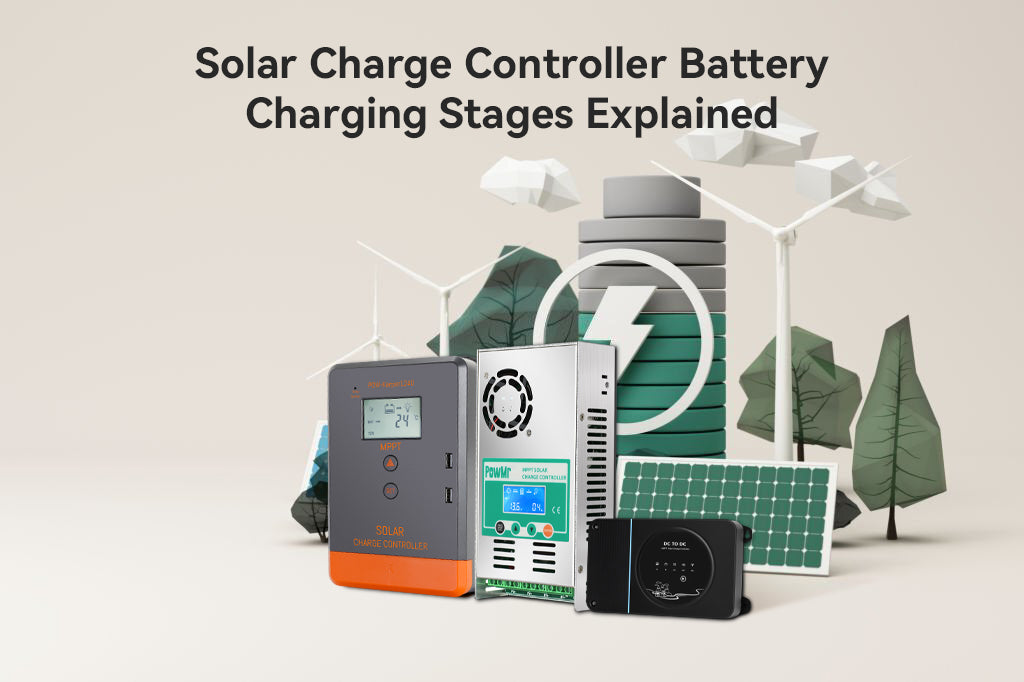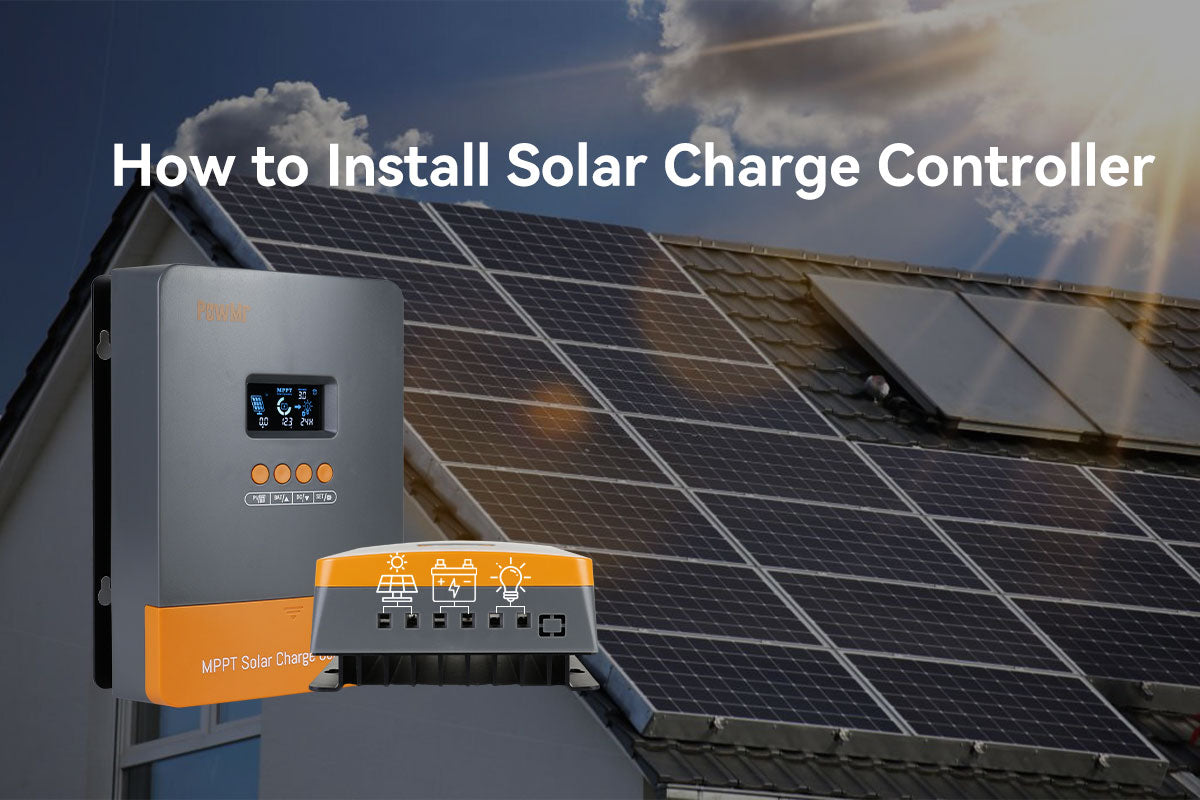In the realm of solar power, the solar charge controller is a vital device. It ensures efficient energy flow between panels and batteries, protecting them from damage.
The topic of this post is controller selection and will start with the type of solar charge controller and
- What are solar charge controllers
- What does solar charge controller do
- What type of solar charge controller to use
- PWM Solar Charge Controller
- MPPT Solar Charge Controller
- Which is the best solar charge controller for your solar system
- How to size a charge controller for my solar system
- Solar Charge controller Buying Guide Video
- FAQs on Choosing Solar Chage Controller
What are solar charge controller?
In the realm of electrical systems, regulators play a crucial role in controlling voltage. However, when it comes to solar power setups, a specific device takes center stage – the solar charge controller.
A solar controller is a vital automated device in solar power systems.At the heart of solar power systems, the solar charge controller serves two primary functions.
Firstly, it facilitates the smooth flow of energy from solar panels to batteries during the charging process. Secondly, it regulates the discharge from batteries to the inverter when power is needed.
How does solar charge controller work?
To manage the flow of energy between solar panels and batteries, solar charge controllers performs the following main tasks to ensure the efficient and safe operation of the entire photovoltaic system.
Control Battery Charging Stages
The charge controller manages battery charging through different stages like bulk, absorption, and float charge.
-
Bulk Charge
Provides maximum current until the battery reaches a certain voltage threshold. -
Absorption Charge
Maintains constant voltage while reducing current to reach full charge capacity. -
Float Charge
Supplies a low, continuous charge to maintain batteries at 100% capacity without overcharging.
Battery Equalization
Battery equalization is a periodic maintenance stage that balances the charge of individual cells within a battery bank. It helps maintain consistent performance across all cells, preventing capacity imbalances and prolonging battery life.
Battery Protection
By combining voltage regulation and current regulation, the charge controller maintains precise control over the charging process, safeguarding the batteries from various potential issues. It includes:
-
Overcharge Protection
Prevents battery damage by controlling charging to avoid exceeding safe voltage limits during the charging process. -
Over-discharge Protection
Preserves battery health by cutting off power when voltage drops to a critical level, preventing deep discharge. -
Short-Circuit Protection
Safeguards batteries by instantly shutting off the circuit in case of a short circuit event. -
Reverse Polarity Protection
Prevents harm to batteries by blocking current flow when battery terminals are connected in the wrong direction. -
Low Voltage Disconnect
The LVD function turns off DC loads when the battery voltage drops to a specified level, preventing deep discharge, which can damage the batteries. -
Overload Protection
Overload protection safeguards the charge controller and system components from excessive current. It detects and manages high currents, preventing damage and potential hazards caused by overload conditions. -
Temperature Compensation
Some charge controllers have temperature sensors to adjust the charging voltage based on the battery's temperature. This feature optimizes the charging process and further protects the batteries from damage due to temperature variations.
What type of solar charge controller to use
PWM Solar Charge Controller
PWM solar charge controllers employ rapid output switching to regulate the average output voltage effectively. By adjusting the pulse width (duty cycle), the output voltage or current can be finely tuned, ensuring reliable and efficient control.
During battery charging, the PWM controllers adapt the waveform to meet the specific needs of the battery, enabling optimized charging based on its current state.
Upon reaching full charge, the PWM controllers switch to a trickling state(float charging), providing a consistent, small current flow to maintain the battery at its fully charged state.
However, the voltage and current output of solar panels will constantly vary due to external factors such as light intensity. As a result, when using a PWM solar charge controller, some waste is inevitable.

Therefore, MPPT (Maximum Power Point Tracking) algorithm is applied to solar charging systems to improve energy utilization efficiency.
MPPT Solar Charge Controller
In a solar photovoltaic system, each photovoltaic module has a working point determined by its connected load. As the irradiance falling on the module changes, the working point also varies throughout the day when the load remains constant.
MPPT (Maximum Power Point Tracking) solar controllers can detect the voltage and current of the solar panels in real-time and continuously calculate the current power output (P=U*I).
By comparing the current power with previous values, the MPPT solar charge controller can determine whether the current working point is above or below the maximum power point. It then adjusts the output voltage accordingly, bringing the working point closer to the maximum power point, thereby extracting and delivering the maximum available power from the photovoltaic array to the load.
![]()
Which is the best solar charge controller for your solar system
Takeaway
Based on the different working principles of these two controllers, it is easy to identify the key difference between them:
Compared to PWM controllers, MPPT controllers have a significantly higher input voltage rating than the battery banks they charge. This is because MPPT controllers possess the unique ability to step down the voltage to match the battery bank's voltage and then boost the current to compensate for any power loss.
The different working principles of PWM controllers and MPPT controllers lead to specific areas of application for each type.
If you find yourself in the following situations, a PWM solar controller would be a better choice:
- Small solar energy systems, such as installing lead-acid batteries in a camper, where the solar panel voltage closely matches the battery voltage.
- When charging efficiency is not a primary concern, such as maintaining the charge of marine batteries.
- Cost-saving installations, as PWM controllers are generally more budget-friendly.
On the other hand, MPPT solar controllers are better suited for the following scenarios:
- Regions with variable weather or harsh environments, as they can adapt to changing solar panel output and optimize energy capture throughout the day.
- Solar photovoltaic arrays with a higher voltage than the battery bank, ensuring safe charging and discharging.
- When aiming to maximize energy efficiency and output for cost-effectiveness, such as in commercial and industrial projects or residential solar setups with battery storage. MPPT controllers have a higher conversion rate for solar panels compared to PWM controllers and can absorb at least 30% more electricity.
How to size a charge controller for my solar system
Regarding what size solar charge controller is suitable for 200/300/400/600/800/1000W solar panels, there is no unified answer.
When choosing a solar controller, there are four key points to consider:
- Compatible battery type(s) and battery voltage.
- Maximum input power of the solar panels.
- Maximum input voltage of the solar panels.
- Maximum charging current of the battery.
Note:
Both of the solar charge controllers in the examples below are compatible with all types of batteries. But when purchasing a controller, it is still necessary to review the specifications and manual of the solar charge controller to determine its compatibility with the your battery type.
MPPT solar charge controller sizing
Using the PowMr POW-M60-PRO MPPT controller as an example:

Key Point 1.
This 60 amp mppt solar charge controller can automatically recognize 12V/24V/36V/48V battery voltage systems, making it compatible with all four voltage options.
Key Point 2.
According to the specifications table above, the maximum input voltage from solar panels not exceed 160V DC, which means the open-circuit voltage of the connected solar panels in series should be equal to or less than 160V.
Key Point 3.
In a 48V system, the maximum input power from the solar panels is 2800W. The total power of the solar panel array connected to the controller should not exceed 2800W, as this could damage the controller.
Key Point 4.
To ensure proper operation, the controller rated charging current should not surpass the battery's maximum charging current allowance. With the POW-M60-PRO having a rated battery current of 60A, the connected battery must have a maximum charging current at least 60A or higher.
For example, PowMr's 48V 100Ah lithium battery can handle a maximum continuous charging current of 100A, making it a compatible choice for use with the POW-M60-PRO controller.
PWM solar charge controller sizing

Taking PowMr Pstar 30A PWM Controller as example:
Key Point 1.
This PWM controller is designed to work with 12V/24V/36V/48V battery systems, automatically recognizing the appropriate voltage.
Key Point 2.
The maximum input voltage for solar panels is 100V DC, ensuring that the open-circuit voltage of the connected solar panels stays below 100V.
Key Point 3.
For 12V battery systems, the maximum input power for solar panels should not exceed 360W. It's essential to avoid surpassing this limit to prevent any damage to the controller.
Key Point 4.
It's crucial to ensure that the output current of the controller does not exceed the battery's maximum charging current allowed. The PowMr Pstar 30A has a rated battery current of 30A. If the maximum continuous charging current of the batteries in the system is 20A, it may be necessary to parallel two batteries with this specification to accommodate the controller.
Solar Charge controller Buying Guide Video
FAQs on Choosing Solar Charge Controller
Can I wire two solar charge controllers?
In situations where there are two or more solar panel arrays, and the photovoltaic output power exceeds the capacity of a single charge controller, using two or more charge controllers with one battery bank can provide a practical solution. This approach is especially effective with MPPT charge controllers since different arrays may have diverse maximum power points, allowing for optimal power output.
However, it is essential to connnect the charge controllers in parallel to ensure uniform voltage and current distribution across all batteries. This balancing of voltage and resistance within the battery bank helps avoid overcharging and potential battery damage.
To maintain system compatibility and safety, ensure that the combined capacity of the charge controllers does not surpass the maximum charging capacity of the battery bank. For a smoother integration, it is advisable to use the same type of solar charge controllers when employing multiple units.
Do I always need a solar charge controller?
Not always, but usually, solar panels output more than their nominal voltage. Only the tiniest panels, like 1 or 5-watt trickle chargers, can function without a controller.
Solar panels are designed for STC (standard test conditions), which include a cell temperature of 25°C and an incident solar irradiance of 1000 watts per square meter. However, in real-world situations, they experience voltage fluctuations above and below their nominal voltage. Solar charge controllers are essential to manage higher voltage outputs, ensuring system safety.
What happens with an oversized solar charge controller?
Using an oversized solar charge controller can have both advantages and disadvantages. On the positive side, an oversized controller allows more current flow, which may be beneficial if you plan to expand your solar array in the future. It can also lead to reduced voltage drop and improved system efficiency.
However, the downsides include higher costs and potential inefficiency at lower solar panel capacities. Additionally, an oversized controller might not operate at its optimal efficiency level, resulting in wasted energy. Therefore, it is essential to carefully consider your system's requirements and balance the pros and cons before choosing a solar charge controller.




Leave a comment
This site is protected by reCAPTCHA and the Google Privacy Policy and Terms of Service apply.